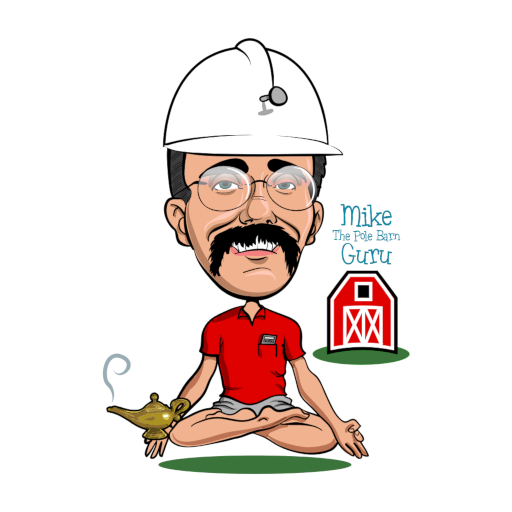Reverberation Room in a Pole Barn
Nestled away in the outskirts of Menomonie, WI stands a secluded century-old barn surrounded by more than 100 acres of farmland.
Instead of sheltering livestock, feed and farm equipment, the barn houses drums, guitars and other instruments and recording gear which lines the old, wooden walls.
Drummer John Richardson, who worked with artists such as Gin Blossoms, Tommy Keene, Badfinger, Wilco guitarist Jay Bennett and others, has turned the old barn into an inviting, professional recording studio.
With the help of some friends who design studios, Richardson converted the large structure into Drum Farm Studio, which has been open for about three years and features more than 1,400 square feet of studio space.
John’s vision includes a post frame (pole) building to be used as a reverb chamber.
 A reverb chamber is a room used for acoustic measurements, in which sound is reflected as completely as possible from enclosing surfaces, the average sound pressure being the same as every point and the arrival of sound waves from different directions is equally probable.
A reverb chamber is a room used for acoustic measurements, in which sound is reflected as completely as possible from enclosing surfaces, the average sound pressure being the same as every point and the arrival of sound waves from different directions is equally probable.
The interior surface of a reverberation chamber is finished with materials which exhibit minimum sound absorption, such as high grade cement mortar and marble.
A diffusive sound field is achieved by making the reverberation chamber irregular in shap, with nonparallel enclosing surfaces and specially designed irregularity achieved by making the reverberation chamber irregular in shape, with nonparallel enclosing surfaces and specially designed irregularities on the walls.
Reflecting elements in the form of curved plates are suspended in a random fashion throughout the room. A reverberation chamber is usually isolated from external noise and vibrations. A sound field is produced within the room with two to four speakers oriented towards the corners of the room.
A reverberation chamber with a volume of approximately 260 cubic yards can be used for measuring the sound absorption factor of various materials, calibrating microphone and noise meters, and measuring the volume of the loud speakers.
While John’s barn may hold more recording equipment and instruments than grain and animals these days, visitors may still see Richardson’s sheep and donkeys roaming the fields surrounding the secluded space — something a city studio definitely can’t offer.






